Bead Based Assay Microfluidic
CAS Article Scholar. Discuss the synergy between microbead and microfluidic technologies.
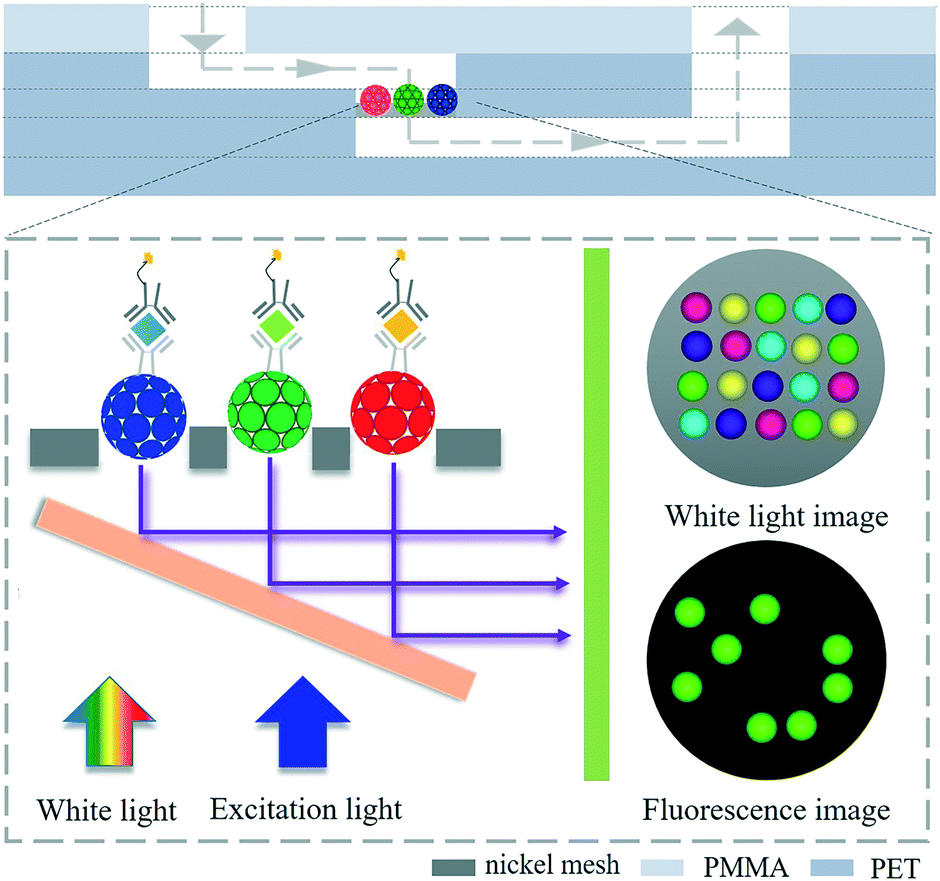 Low Cost 3d Microfluidic Chips For Multiplex Protein Detection Based On Photonic Crystal Beads Lab On A Chip Rsc Publishing Doi 10 1039 C8lc00784e
Low Cost 3d Microfluidic Chips For Multiplex Protein Detection Based On Photonic Crystal Beads Lab On A Chip Rsc Publishing Doi 10 1039 C8lc00784e
15 Unique, and Fun Bead based assay microfluidic

Microbeads-based assay on microfluidic platform is a promising analytical method and has displayed several advantages suitable for analysis of biomolecules 3336.. Acute myocardial infraction and pulmonary embolism show similar symptoms of chest pains in a patient. While many bead-based assays rely solely on reactions at the outer surface of the bead the accessibility of the three-dimensional internal microstructure of porous beads enhances test sensitivity and improves binding capacity Ali et al. This study enhances our understanding of bead-based microfluidic assays and provides a design tool for developers of point-of-care lab-on-chip devices for medical diagnosis food and water quality inspection and environmental monitoring.
Bead-based microfluidic immunoassays have an edge over normal fluidic systems as it employs microbeads as a solid support. To reduce the detection time a bead-based assay method was used to increase the reaction time due to the high surface-to-volume-ratio of beads while a non-uniform electric field was applied on the chip to generate the dielectrophoretic force needed to guide and capture the samples based on their dielectric properties. By using specific probe-conjugated magnetic beads the target deoxyribonucleic acid DNA of the.
We review the use of magnetic micro- and nanoparticles magnetic beads in microfluidic systems for ultrasensitive protein detection. This study reports a new diagnostic assay for the rapid detection of methicillin-resistant Staphylococcus aureus MRSA by combing nucleic acid extraction and isothermal amplification of target nucleic acids in a magnetic bead-based microfluidic system. Ad analytes at very low concentrations with a median assay sensitivity of 05 pgmL.
Ad analytes at very low concentrations with a median assay sensitivity of 05 pgmL. There are three main advantages in the use of these microbeads. 1Department of Engineering Science National Cheng Kung University Tainan Taiwan.
For example in clinical diagnosis different causes may often produce similar symptoms. Lab Chip 13 47114739 2013. Microbeads are frequently used as a solid support for biomolecules such as proteins and nucleic acids in heterogeneous microfluidic assays.
The same principle could be applied to microfluidic immunoassays in order to retain all the advantages of a fluidic device and significantly improve multiplexing capability. During recent years magnetic beads have been used frequently in immunoassays either as mobile substrates on which the target antigen is captured as detection labels or simultaneously as substrates and labels. FirePlexs superior sensitivity allows for detection and quantitation of.
Wang CH1 Lien KY Wu JJ Lee GB. However relatively few studies investigate the binding kinetics on modified bead surfaces in a microfluidics context. For the conventional bead-based assay within microfluidic devices only one data point per reaction was obtained and it was not easy to select the same detection point in each experiment for on-chip assays because detection was carried out by analyzing downstream solution at.
Bead-based microfluidic immunoassays. Using several unique sets of code different analytes can be detected in a single assay by tracing the identity of individual beads. However relatively few studies investigate the binding kinetics on modified bead surfaces in a microfluidics context.
A bead-based immunofluorescence-assay on a microfluidic dielectrophoresis platform for rapid dengue virus detection Biosens Bioelectron. A magnetic bead-based assay for the rapid detection of methicillin-resistant Staphylococcus aureus by using a microfluidic system with integrated loop-mediated isothermal amplification. Magnetic micro- and nanoparticles magnetic beads have been used to advantage in many microfluidic devices for sensitive antigen Ag detection.
However relatively few studies investigate the binding kinetics on modified bead surfaces in a microfluidics context. Recent reviews by Ng et al. A case for microfluidic magnetic bead-based assays.
Microbeads are frequently used as a solid support for biomolecules such as proteins and nucleic acids in heterogeneous microfluidic assays. Firstly the surface to volume ratio is greatly increased even in a microfluidic device. Microbeads are frequently used as a solid support for biomolecules such as proteins and nucleic acids in heterogeneous microfluidic assays.
FirePlexs superior sensitivity allows for detection and quantitation of. Today assays that use as read-out of the signal the number count of immobilized beads on a surface for quantification of a samples analyte concentration have been among the most sensitive and have allowed protein detection lower than the. And Derveaux et al.
Principle of microfluidic bead-based enzymatic amplification assay for microRNA detection using quantum dot labels. We fabricated a microfluidic microbeads array chip for microRNA detection. In this study a customized hot embossing technique is used to stamp microwells in a thin plastic substrate where streptavidin-coated.
In practical use the single-bead-based microfluidic assay of this work may offer advantageous capability of consecutive and multiplexing measurements. Microbeads-based assay on microfluidic platform is a promising analytical method and has displayed several advantages suitable for analysis of biomolecules 3336.
 Bead Based Microfluidic Platforms Springerlink
Bead Based Microfluidic Platforms Springerlink
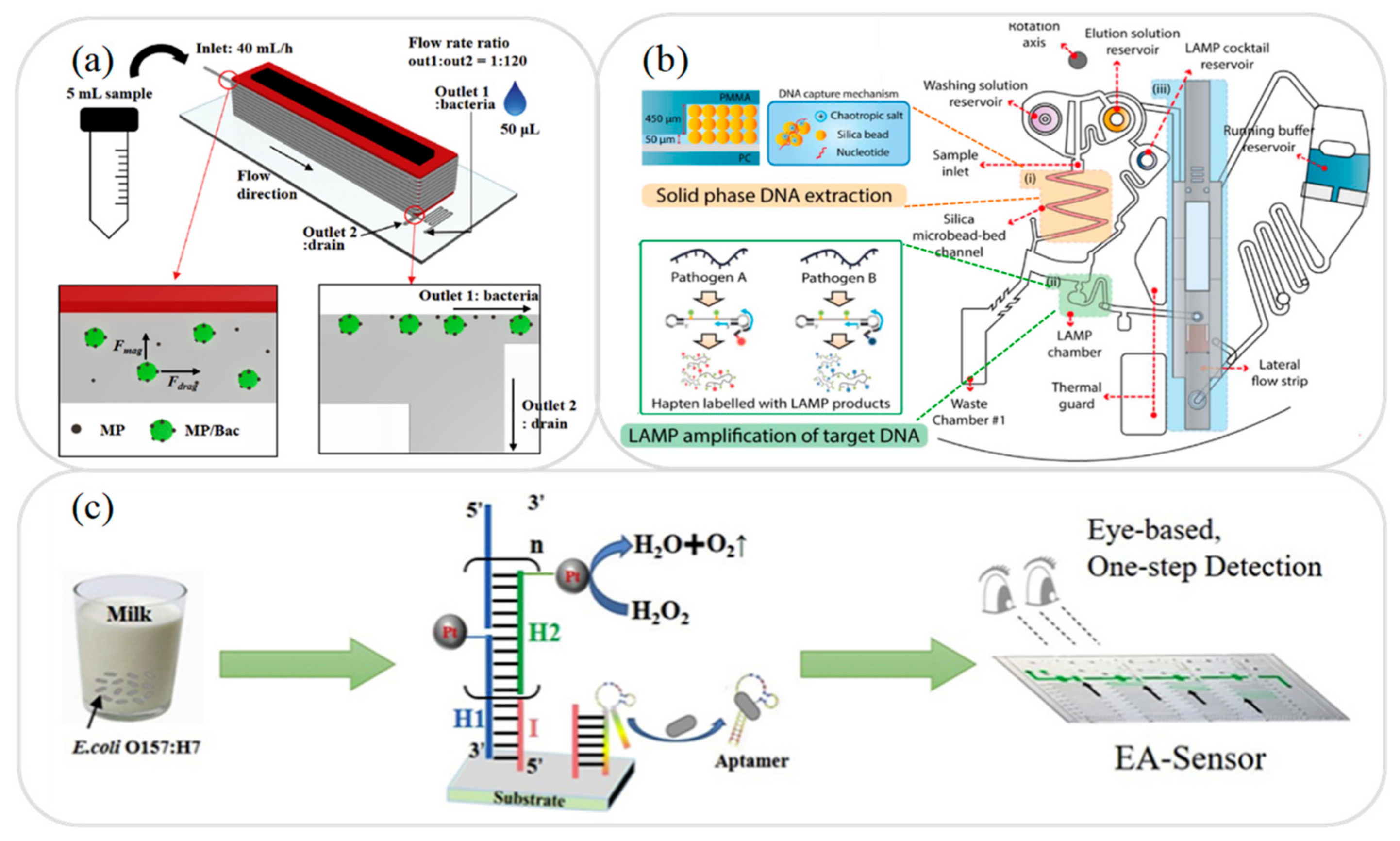 Micromachines Full Text Recent Advances In Microfluidic Devices For Contamination Detection And Quality Inspection Of Milk
Micromachines Full Text Recent Advances In Microfluidic Devices For Contamination Detection And Quality Inspection Of Milk
 Microfluidic Chip Design And Functionality For Single Cell Protein Scientific Diagram
Microfluidic Chip Design And Functionality For Single Cell Protein Scientific Diagram
 Microfluidic Based Magnetic Counting Assay A Scheme Of Amicrofluidic Scientific Diagram
Microfluidic Based Magnetic Counting Assay A Scheme Of Amicrofluidic Scientific Diagram
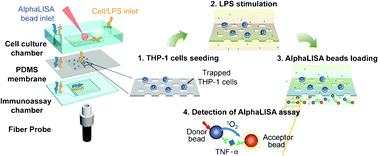
 Methods For Immobilizing Receptors In Microfluidic Devices A Review Sciencedirect
Methods For Immobilizing Receptors In Microfluidic Devices A Review Sciencedirect
 The Design Of The Integrated Microfluidic Chip For Chip Assay The Scientific Diagram
The Design Of The Integrated Microfluidic Chip For Chip Assay The Scientific Diagram
 The Procedures Involved In A Microfluidic Chip Assay And The Schematic Scientific Diagram
The Procedures Involved In A Microfluidic Chip Assay And The Schematic Scientific Diagram
 Schematic Illustration Of Microfluidic Bead Based Immunoassay Mfbi Scientific Diagram
Schematic Illustration Of Microfluidic Bead Based Immunoassay Mfbi Scientific Diagram
 Microfluidic Communicating Vessel µcove Chip For Rapid Magnetic Scientific Diagram
Microfluidic Communicating Vessel µcove Chip For Rapid Magnetic Scientific Diagram
 Schematic View Of The Bead Based Fluidic Assay For This Microfluidic Scientific Diagram
Schematic View Of The Bead Based Fluidic Assay For This Microfluidic Scientific Diagram
 A The Bead Based Agglutination Assay Beads With Capture Antibodies Scientific Diagram
A The Bead Based Agglutination Assay Beads With Capture Antibodies Scientific Diagram
 Schematic Illustration Of The Selex Processes In Magnetic Bead Based Scientific Diagram
Schematic Illustration Of The Selex Processes In Magnetic Bead Based Scientific Diagram
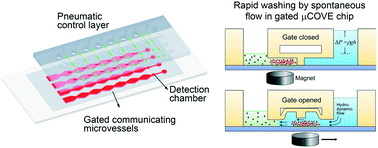
 Digital Microfluidic Assay For Protein Detection Pnas
Digital Microfluidic Assay For Protein Detection Pnas
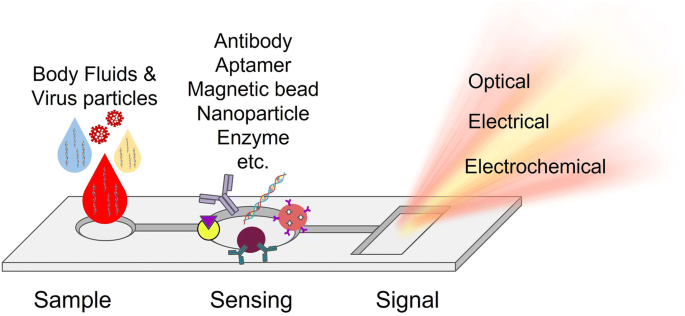 Microfluidic Based Virus Detection Methods For Respiratory Diseases Springerlink
Microfluidic Based Virus Detection Methods For Respiratory Diseases Springerlink
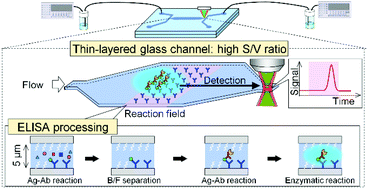
 Schematic Illustration Of Microfluidic Bead Based Immunoassay Mfbi Scientific Diagram
Schematic Illustration Of Microfluidic Bead Based Immunoassay Mfbi Scientific Diagram
 Bead Imaging Setup A Photograph Of Microfluidic Imaging Device Scientific Diagram
Bead Imaging Setup A Photograph Of Microfluidic Imaging Device Scientific Diagram
 Illustration Of The Working Principles Behind The Bead Based Elisa Scientific Diagram
Illustration Of The Working Principles Behind The Bead Based Elisa Scientific Diagram
 Illustration Of The Working Principles Behind The Bead Based Elisa Scientific Diagram
Illustration Of The Working Principles Behind The Bead Based Elisa Scientific Diagram
 Microfluidic Bead Synthesizer A Stage 1 Of Bead Synthesis Scientific Diagram
Microfluidic Bead Synthesizer A Stage 1 Of Bead Synthesis Scientific Diagram
 Schematic Overview Of The Work Flow Of The Droplet Based Microfluidic Scientific Diagram
Schematic Overview Of The Work Flow Of The Droplet Based Microfluidic Scientific Diagram